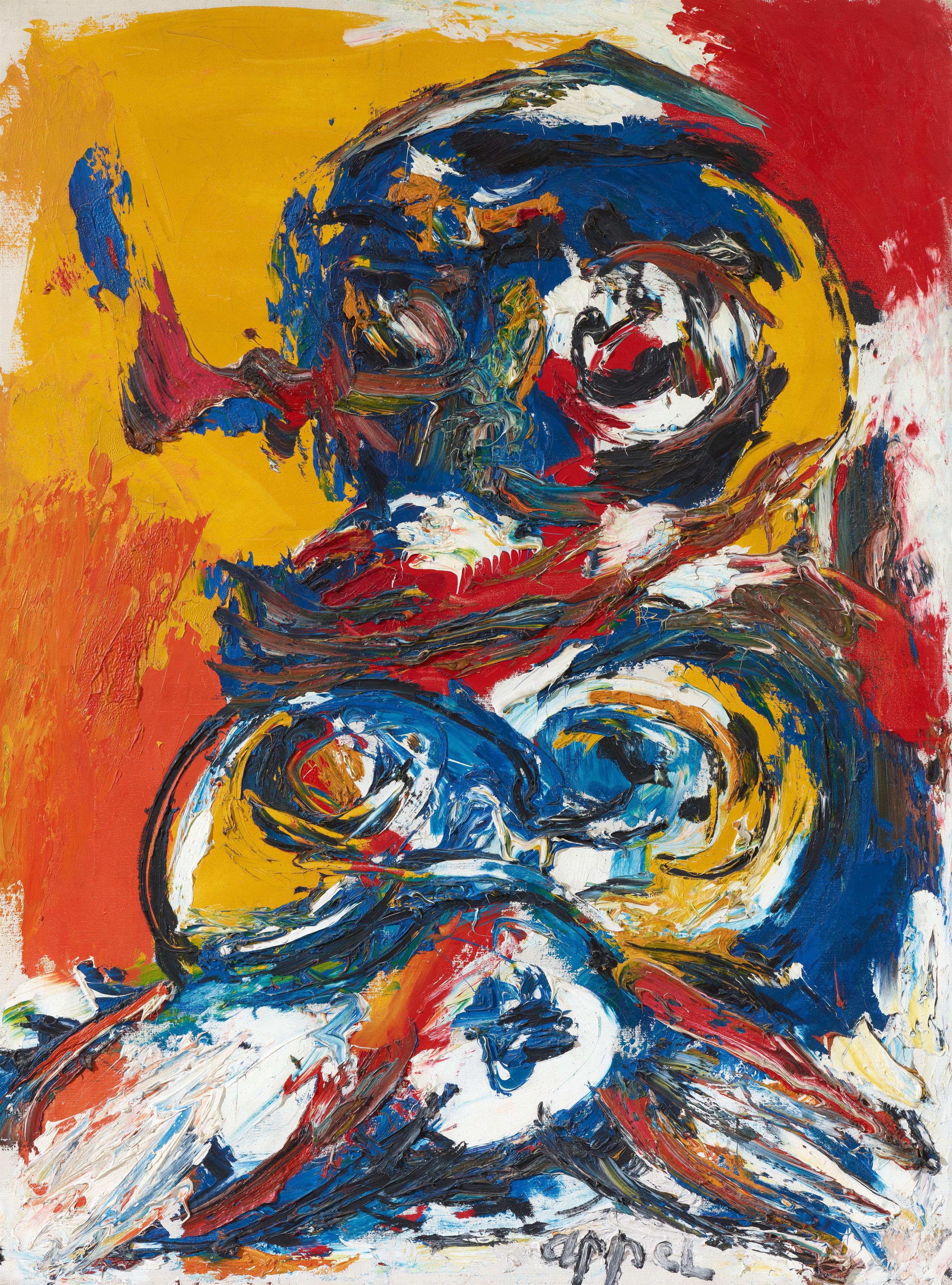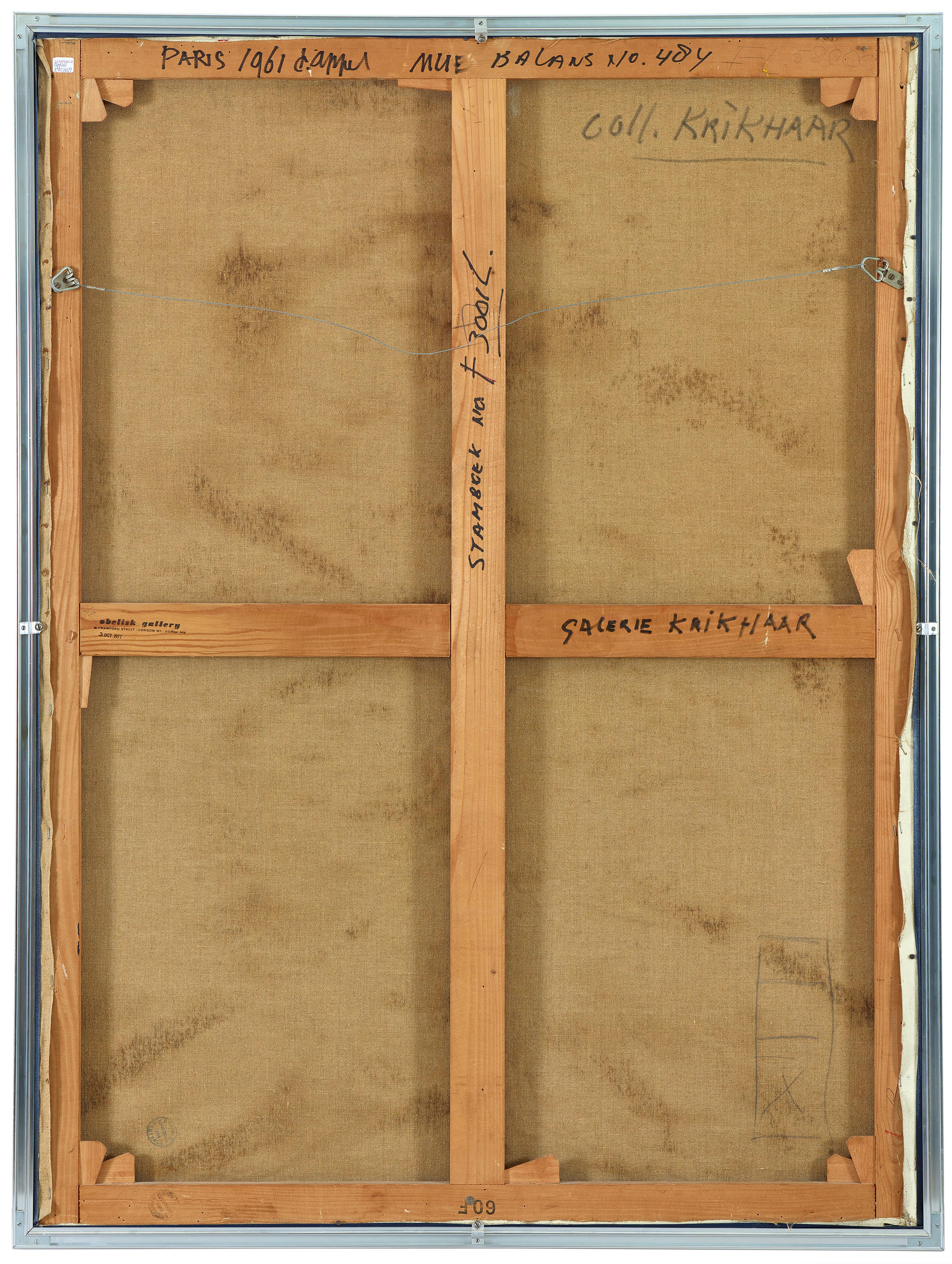Karel Appel
Nue
1961
Oil on canvas. 130 x 97 cm. Framed. Signed 'appel'. Signed, dated, titled and inscribed 'PARIS c.appel NUE' verso on stretcher and designated by another hand. - Minor traces of age.
In the early 1960s, Karel Appel worked on a series of female nudes including the current lot. The artist paints sitting or standing nudes - the majority ending at the knees - using different models, some of which are named in the title. They share an energised immediacy with no intention of erotic effect, but accentuating the vitality of the human body.
This sitting nude is a particularly powerful example of the series. Appel portrays the woman as a mysterious being, reduced to head, breasts and parted legs, the face darkly alienated. The figure is seemingly formed entirely by the paint in an impulsive creative process. Female shapes emerge from the swirls and streaks of pastose paint that are flung onto the canvas, remaining two-dimensional despite their opulence.
Appel's nudes present their feminity in an open, almost aggressive and extremely self-confident manner. They are not objects at the mercy of the viewer; they do not intend to appear seductive, but face the viewer provocatively and at times even with a threatening presence.
For the exhibition “Nus/Nudes”, which gallery Gimpel & Hanover organised on Appel's nudes in 1963/1964, Bert Schierbeek, an experimental poet and COBRA companion, wrote one of his associative poems in which he expressed the self-determined openness of Appels models in free form: „[…] the jungle approaches in damp apparel and covers the woman/but she remains: legible/where nudity steps out of itself/and gets under the skin/and visible/and transparent/for it is the skin that gives nakedness its shape/and creates a visage/for all is transparent/this is how the model moves on the hanging wall and pokes out the eyes of the visitors/for all is transparent/ […]“ (Bert Schierbeek, die nackten by karel appel, exhib.cat. Karel Appel, Nus, Gimpel & Hanover Galerie, Zürich i.a. 1963/64, not pag.)
„Let's say the first color I put on canvas is red. Well, that act determines the whole process of the painting. Thereafter I may put on some yellow, some blue; then I may destroy the red with black; and the blue may become yellow, and the yellow purple, while the black turns back into white. Anything, apparently, can happen. But the whole fascinating process started with that first red, and if I hadn't begun with red, the whole painting would be different. Is there a system, an order, in all this chaos? All I know is that if I put paint on the canvas, it sticks, whereas if my aim's out, it ends up on the floor. There's logic for you, no? Anyway, it's as near logic as I can get, because the rest of the process is beyond me; it's pure freedom.” (Karel Appel, zit. nach: Alfred Frankenstein (Hg.), Karel Appel, New York 1980, S.161).
Provenance
Galerie Krikhaar, Amsterdam (with handwritten note verso); private collection, Europe
Exhibitions
London 1977 (Obelisk Gallery), Karel Appel (stamp verso)
Zurich 1963 (Gimpel & Hanover Galerie), Paris (Galerie Europe), London 1963/1964 (Gimpel Fils), New York 1964 (Martha Jackson Gallery), Karel Appel, Nus, exhib.cat.no. 4 (here titled "Torso")




